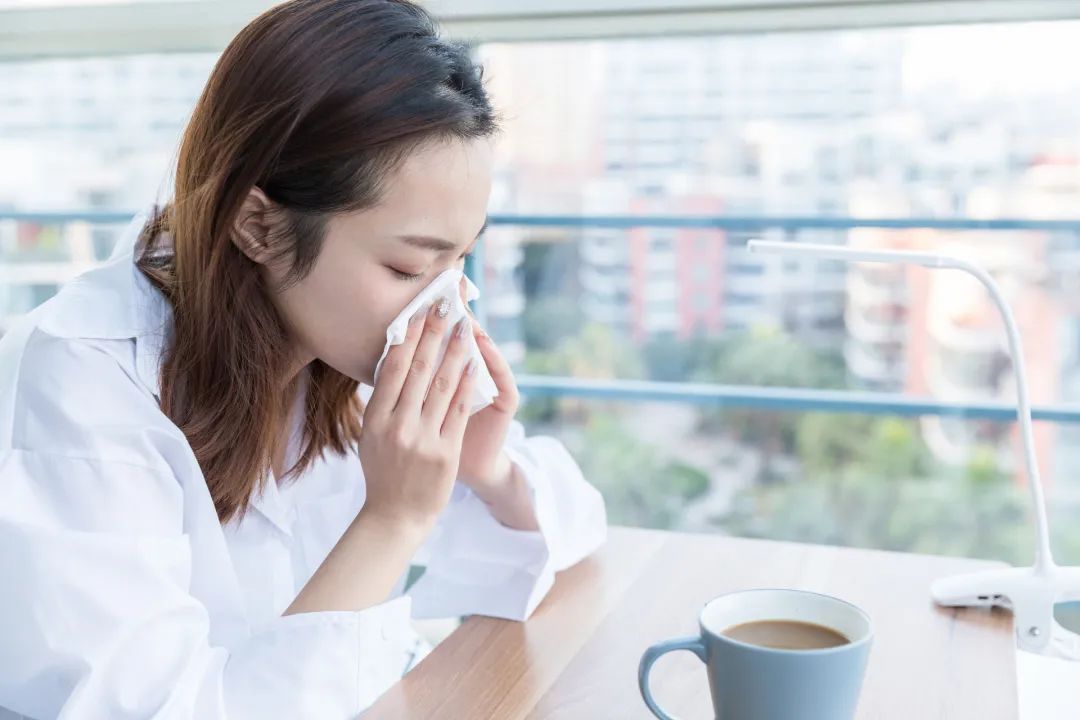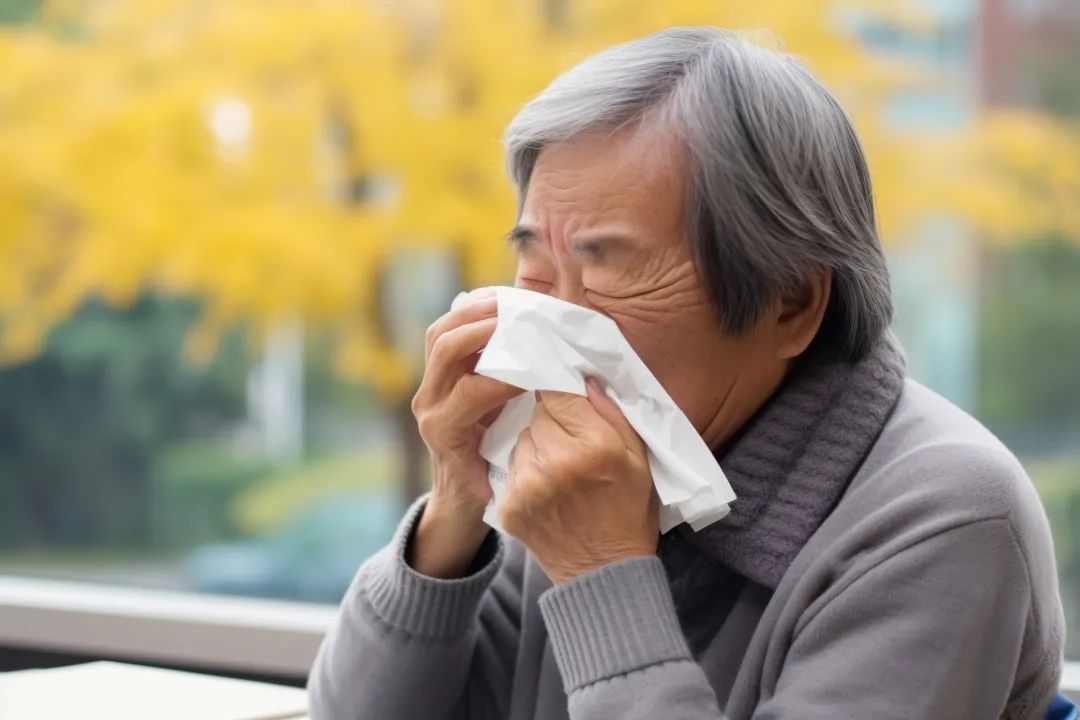Wind-Heat Cold is caused by the invasion of Wind-Heat evil into the exterior and the disharmony of Lung Qi. It is commonly seen in spring, resulting from external Wind-Heat. Traditional Chinese Medicine (TCM) considers Wind-Heat Cold as an exterior syndrome caused by the invasion of Wind-Heat evil, with symptoms manifesting as follows:
1. Fever

Patients with Wind-Heat Cold often experience high fever, dry mouth, and throat discomfort. This occurs because the Wind-Heat evil invades the body, causing Yang Qi to rise and Yin fluids to be damaged, leading to fever and dryness. At this time, we can appropriately drink some cool tea or take TCM herbs that clear heat and detoxify to alleviate symptoms.
2. Cough
Patients with Wind-Heat Cold frequently have a cough, with phlegm that is often yellow or yellow-green. This is due to the stimulation of the respiratory mucosa by Wind-Heat evil, causing an inflammatory response that thickens phlegm, making it difficult to expel. At this time, we can drink more warm water or gargle with honey water to relieve throat pain and coughing.
3. Runny Nose
Patients with Wind-Heat Cold may experience nasal congestion and a runny nose, sometimes accompanied by sneezing. This is because Wind-Heat evil invades the nasal mucosa, causing blood vessel dilation and increased secretion, leading to nasal congestion and a runny nose. At this time, we can wash the nasal cavity with warm water or use saline to alleviate nasal congestion and runny nose.
4. Sore Throat
Patients with Wind-Heat Cold often feel pain and discomfort in the throat, and may even experience hoarseness. This is due to the invasion of Wind-Heat evil in the throat area, causing inflammation and swelling of the mucosa, leading to sore throat and hoarseness. At this time, we can drink more warm water or gargle with saline to relieve throat pain and hoarseness.
5. Headache

Patients with Wind-Heat Cold often experience headaches and dizziness. This occurs because Wind-Heat evil disturbs the head, causing poor circulation of Qi and blood, leading to headaches and dizziness. At this time, we can rest more, maintain a pleasant mood, and avoid overexertion to alleviate headaches and dizziness.
6. General Discomfort
Patients with Wind-Heat Cold may also experience fatigue and loss of appetite. This is because Wind-Heat evil depletes the body’s righteous Qi, leading to decreased resistance, resulting in general discomfort and loss of appetite. At this time, we can drink more water and eat more fruits and vegetables to enhance our immune system and promote recovery.
Treatment for Wind-Heat Cold should be based on specific symptoms. Here are some available treatment methods:
1. Headache: Add herbs such as Ju Hua (Chrysanthemum), Sang Ye (Mulberry Leaf), and Man Jing Zi (Vitex Fruit) to clear and benefit the head, and can also be combined with Jiu Wei Qiang Huo Wan (Nine Flavor Qiang Huo Pill) and Huang Lian Shang Qing Wan (Huang Lian Clear Heat Pill) for treatment.

2. Cough and Phlegm: Add herbs such as Xing Ren (Apricot Kernel), Gua Lou Pi (Trichosanthes Peel), and Bei Mu (Fritillaria) to stop cough and transform phlegm, as well as Mi Lian Chuan Bei Pi Pa Gao (Honey-Processed Fritillaria and Loquat Syrup) and Sang Ju Gan Mao Pian (Mulberry and Chrysanthemum Cold Tablets) for treatment.
3. Sore Throat: For patients with severe pain, select herbs such as Ma Bo (Mushroom), Ban Lan Gen (Isatis Root), and Xuan Shen (Scrophularia) to detoxify and benefit the throat. Also, consider using Niu Huang Qing Huo Wan (Cattle Gallstone Clear Heat Pill) and Shuang Huang Lian Kou Fu Ye (Double Huang Lian Oral Liquid) for treatment.
4. Wind-Heat with Dampness: Add herbs such as Pei Lan (Eupatorium) and Bai Bian Dou (White Hyacinth Bean) to transform dampness, which can be used alongside antiviral oral liquids.
Additionally, acupuncture treatment can be applied at points such as Lie Que (Lung 7), Feng Chi (GB 20), He Gu (LI 4), and Wai Guan (SJ 5) to dispel Wind and release the exterior. Treatment usually needs to be adjusted based on the patient’s specific clinical manifestations, which can have a cooling and dispersing effect. During treatment, it is important to keep warm and avoid greasy and spicy foods.
The symptoms of Wind-Heat Cold are quite evident. If the above symptoms occur, it is advisable to seek medical treatment promptly. At the same time, we should also pay attention to maintaining good lifestyle and dietary habits to enhance our immune system and prevent the occurrence of colds.
—END—

